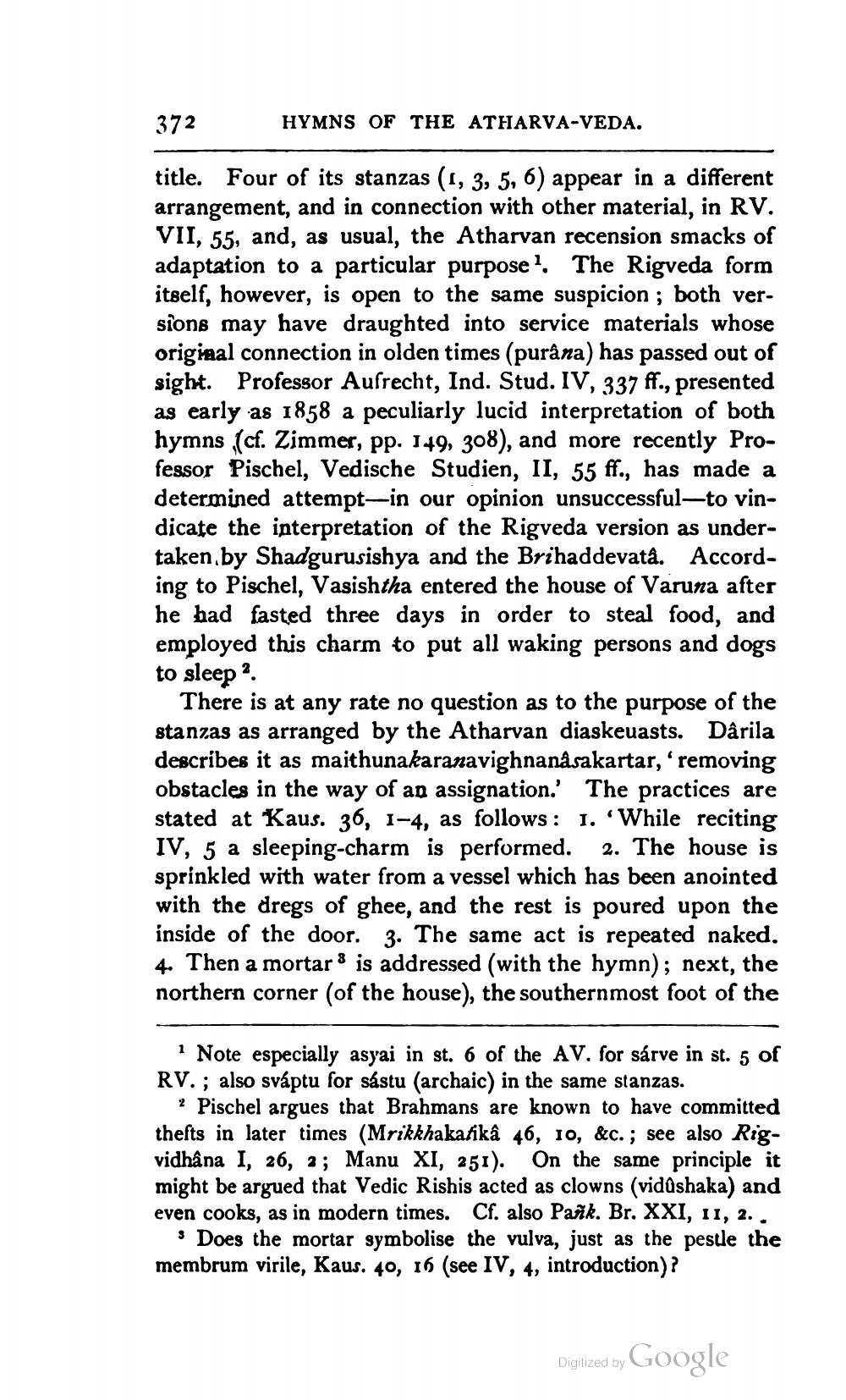________________
372
HYMNS OF THE ATHARVA-VEDA.
title. Four of its stanzas (1, 3, 5, 6) appear in a different arrangement, and in connection with other material, in RV. VII, 55, and, as usual, the Atharvan recension smacks of adaptation to a particular purpose. The Rigveda form itself, however, is open to the same suspicion ; both versions may have draughted into service materials whose original connection in olden times (purâna) has passed out of sight. Professor Aufrecht, Ind. Stud. IV, 337 ff., presented as early as 1858 a peculiarly lucid interpretation of both hymns (cf. Zimmer, pp. 149, 308), and more recently Professor Pischel, Vedische Studien, II, 55 ff., has made a determined attempt-in our opinion unsuccessful—to vindicate the interpretation of the Rigveda version as undertaken by Shadgurusishya and the Brihaddevata. According to Pischel, Vasishtha entered the house of Varuna after he had fasted three days in order to steal food, and employed this charm to put all waking persons and dogs to sleep 2.
There is at any rate no question as to the purpose of the stanzas as arranged by the Atharvan diaskeuasts. Dârila describes it as maithunakaranavighnanåsakartar,“ removing obstacles in the way of an assignation.' The practices are stated at Kaus. 36, 1-4, as follows: 1. While reciting IV, 5 a sleeping-charm is performed. 2. The house is sprinkled with water from a vessel which has been anointed with the dregs of ghee, and the rest is poured upon the inside of the door. 3. The same act is repeated naked. 4. Then a mortar is addressed (with the hymn); next, the northern corner (of the house), the southernmost foot of the
i Note especially asyai in st. 6 of the AV. for sárve in st. 5 of RV.; also sváptu for sástu (archaic) in the same stanzas.
? Pischel argues that Brahmans are known to have committed thefts in later times (Mrikkhakafikâ 46, 10, &c.; see also Rigvidhâna I, 26, 2; Manu XI, 251). On the same principle it might be argued that Vedic Rishis acted as clowns (vidůshaka) and even cooks, as in modern times. Cf. also Pank. Br. XXI, 11, 2..
Does the mortar symbolise the vulva, just as the pestle the membrum virile, Kaus. 40, 16 (see IV, 4, introduction)?
Digjized by Google




